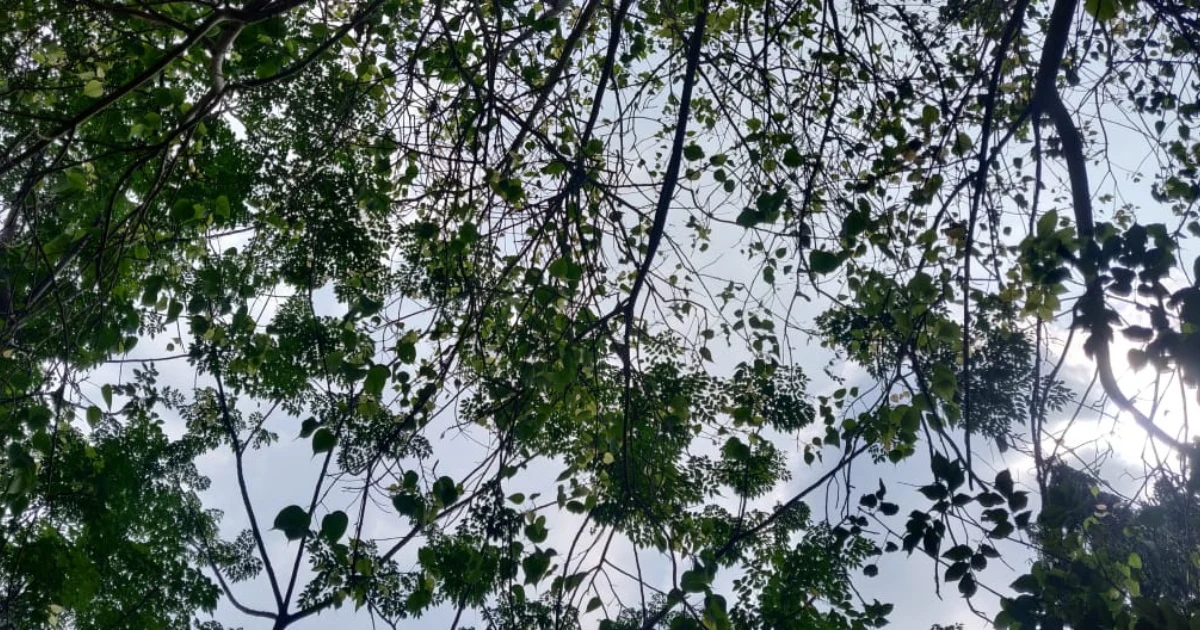Introduction to the Schools of Thought Series
Tradition is that which continues. To be able to stand on firm ground in the present; to be able to build a sustainable future, we need a deep foundation in the past, and an underpinning of culture. Bṛhat is focused on some big inter-related goals, the most important being the ability to negotiate the cultural of policy in Bhāratavarṣa. But for that we also need to stand upon the intellectual, cultural and spiritual foundation of our forefathers – ṛṣis and scholars who made the world a better and a more comprehensible place.
We come from a tradition in which Sanātana culture was never divorced from the policy of the state of Bhāratavarṣa. There was always a Vaśiṣṭha who guided a Daśaratha; always a Kṛṣṇa leading an Arjuna; and always a Cāṇakya guiding a Candragupta. It was only with the adoption of the colonial polity after Bhāratavarṣa’s independence that an alien thought was imposed on native culture and the culture of Bhāratavarṣa became divorced from its policy.
But they have been divorced long enough, resulting in a plethora of institutions and policies which seek to impose an alien and colonial paradigm on Indian society, resulting in cultural destruction, artistic atrophy, social strife and civilizational decline. We need to reconnect Bhāratīya culture to its policy. We need to take inspiration from our ancient culture once again and also seek guidance from the intellectual churning that has happened in our contemporary times. And this is where Bṛhat sees its role.
We seek big goals. But for that we need to build on the foundation built by our great sages and scholars. We draw our vitality from some very important and select ‘Schools of Thought’ which define our identity, inform our views, and guide our actions. These schools of thought come together in the ways in which we think and create and in the ways we seek to guide policy to culture. We seek to forge a unique path of culture-conducive policy in Bhāratavarṣa by building on the inspiration from these schools.
These schools are:
- Swami Vivekananda’s School of Hindu Renaissance
- Sri Aurobindo’s School of Bhavani Bharati
- Voice of India School of Śatrubodha
- Dharampal School of Svayambodha
- School of Political Traditionalists
- School of Cultural Traditionalists
- The School of Arthanomics
- School of Consilience – Edge.org
- School of Narrative Non-fiction
Culture anchors identity. Culture is about giving an individual a place in the universe by cushioning his idea of the self in various identities which negotiate, on one hand, the distance between the State and the individual, and on the other, between Brahman and the ego. A dhārmika culture infused with the values of Sanātana dharma uses these multiple identities to help navigate the individual through saṃsāra and then lead him towards the goal of mokṣa. It is about giving the individual an idea of the ‘self’ which leads him to a realization of the supreme Self.
What is this basic identity of Bhāratavarṣa? Swami Vivekananda and Śrī Aurobindo, one of the two greatest saints of contemporary India, both believed that the basic identity of India is Hindu. It is only by recognizing that the soul of Bhāratavarṣa lies in the ethos of Sanātana dharma that we can proceed on the path of building a strong society in future. Swami Vivekananda kick-started the Hindu renaissance which was taken forward by Śrī Aurobindo. These two schools of thought provide us our most fundamental anchor in identity and culture.
It is very necessary to have a very clear idea of who we are; and who are not.
We need to clearly know our cultural boundaries. For without boundaries, there is no existence in saṃsāra. Between the individual and the State there is society in its myriad forms and stages. Culture gives the individual a sense of ‘us’; it makes us know who we are. And an inevitable corollary of a sense of ‘us’ is also a sense of ‘them’, of who we are not.
No society can function without a sense of ‘them’, of who we call as the other. As this sense of clear ‘us’ and ‘them’ collapses, the borders of the society, both intellectual and geographical, become too porous, and soon another society with a very strong sense of ‘us’ and ‘them’ overtakes the host society to its ultimate obliteration.
Bhāratavarṣa always had a healthy sense of ‘us’ vs. ‘them’. This is why we managed to remain the greatest culture and civilization on earth for a very long time. We had ways of assimilating the migrants and the invaders. And when for the first time in the 7th century we encountered an invader who did not want to assimilate – the Islamic invaders – we reciprocated by keeping them outside the idea of Bhāratavarṣa. But somewhere during the wee hours of colonialism, we lost this sense, the Śatrubodha necessary to maintain a culture which upholds a great Śvayambodha.
It is the Voice of India School which provides us a healthy sense of Śatrubodha on a cultural and civilizational level. Although almost every Indic school provides us with a sense of Svayambodha, the two schools that deal most in it are the School of Dharampal, the School of Political Traditionalists and the School of Cultural Traditionalists. While Dharampal School deals with the nature of institutions that Bhāratavarṣa hosted before colonial interruptions, the political traditionalists provide us with a healthy sense of the political and religious history of our civilization. But it is the cultural traditionalists who tell us what Indic culture means in action by dwelling upon the practices and institutions that are critical for our cultural survival. This cultural overview is completed by the School of Arthanomics in which we discuss the idea of economics as it relates to a traditional culture with a different epistemology.
Science as we know it today is a way of knowing. It is not the best way to dwell on the most important spiritual questions, but it is a way of knowing nevertheless which has serious implications for our world. It is necessary to have a grasp of it. But we also need to be careful of its cultural origin in the West. That is why we take our inspiration from a school which is particularly interested in creating a unified theory of knowledge where science and humanities come together. It is the School of Consilience. The word consilience was coined by Edward O. Wilson to combine the two spheres of knowledge. But it is the edge.org school which has practised it most well. This school is the best attempt by the West to bring the two branches of knowledge together. It also attempts to learn from the Eastern darśanas. Bṛhat seeks to incorporate this school of thought into its work as far as it supports our cultural identity and cause.
While all these schools provide us kernels of thought, it is the School of Narrative non-fiction of John McPhee from which we take inspiration of form. We are cultural storytellers and while we take inspiration from the ancient traditions of Bhāratavarṣa we also get inspired from a tradition in the West which most closely resembles the Paurāṇika tradition of storytelling and optimises it for the contemporary world.
In short, we need to revive and build upon what is good in our culture and civilization with an acute sense of our identity by knowing who we are and who we are not. Through these schools of thought we navigate through the theory and practice of our history, dharma, culture, identity and civilization with a Bhāratīya take on economics. We also incorporate science as a way of knowing and we do this all by telling cultural stories in narrative nonfiction style.
Swami Vivekananda’s School of Hindu Renaissance
It has almost become a cliché to take inspiration from Swami Vivekananda. Almost every group from left to right takes inspiration from his thought and works. It is inevitable too as he is one of the most famous cultural and religious icons of contemporary Bhāratavarṣa. But an unfortunate fallout of this fame is that people start distilling some of the most common aphorisms from his work which are too general to be of any practical inspiration or use but are still sworn by many individuals and organizations.
The other danger is the misappropriation of his legacy, which has also happened a lot. Atheists and leftists have used Swami Vivekananda’s words out of context to imply that he favoured serving the poor and not building temples. The inference is that he was a sort of secular atheist who was more given to social service and in this sense was a great rebel from the orthodox Hindu tradition.
Nothing can be farther from the truth. What Swami Vivekananda was alluding to in his Daridra Nārāyaṇa passage was the vision of immanence which is the core feature of many Hindu darśanas. If you see the divine in everything and everyone, the poor and the beggar is also a Nārāyaṇa to serve. This is what he was alluding to.
Bṛhat seeks guidance from Swami Vivekananda’s work and his life, but it is imperative here to clearly point out what sort of inspiration we seek. There is a very famous incident of Swami Vivekananda in his early life when he was known as Narendra. He had gone to ask Śri Ramakrishna about the deepest mysteries of life like the existence of God and the purpose of life. Śri Ramakrishna was a jñānin who belonged to a very traditional Hindu lineage of gurus.
When a curious Narendra puts questions about Ultimate Reality and the Supreme Truth to Śri Paramahamsa, the jñānin guru touches him and sends him into a spiritual trance. Vivekananda comes back to his worldly senses after some hours and his life is forever transformed. He gets his answers, or at least he discovers the path with which he can get his answers.
But what happened to Swami Vivekananda when Śri Paramahamsa touched him? What exactly is a trance? How did he get the answers to the questions that he was asking by this seemingly magical happenstance between them? It is understood mostly as an inspirational episode which led young Narendra to become Swami Vivekananda.
But the truth is much deeper and more important. It is critical to understand this episode to know what kind of Bhāratavarṣa Swami Vivekananda wanted to build.
What Śri Paramahamsa did was to initiate Narendra into the practice of sādhanā/ meditation. He was giving dīkṣā to his disciple in the most traditional manner under a well established Sanātana tradition. This mode of dīkṣā is most popular in the Śākta and Tāntrika traditions but not limited to them. It was not a strange occurrence which happened only once. It was far from a novel act.
It is a regular tradition that takes place whenever a disciple is initiated into sādhanā by a traditional gurū. The point of the story is that what transpired that day between Narendra and Śri Paramahamsa was very much a traditional Hindu dīkṣā, by a traditional Hindu guru, in a traditional Hindu way. He was a great Hindu saint, who reaffirmed the Hindu tradition and Sanātana Dharma.
This is the inspiration we seek to get from Swami Vivekananda. And it is directly critical to Bṛhat. Anchoring on Indian Knowledge Systems, furthering awareness through cultural story-telling and finally imbuing policy with cultural wisdom is the vision that animates us. But the seed of all knowledge in the sacred land of Bhāratavarṣa lies in the yogic ćitta bhūmīs of yogīs who go into deep meditation under the guidance of a guru.
In other words, it is the Supreme Consciousness itself which is the source of all knowledge in Bhāratavarṣa. All Hindu disciplines and scriptures are derived from the brushes with reality by great yogīs and ṛṣis during intense sessions of meditation. IKS originates in the yogic ćitta bhūmīs. It is on this path of self-reflection and self-realization that one encounters the inspiration of all knowledge. The journey of self-discovery is also the journey of the discovery of the world.
Anyone who intends to study and further IKS cannot forget its true source. IKS is not just about intellect, although it involves very tough exercise of intellect. IKS transcends the intellect. It is not just thought, it is also action. The outward journey of saṃsāra has to be coupled with the inward journey through meditation to understand IKS properly.
It is this particular tradition that Swami Vivekananda stumbled into when he was initiated into sādhanā by his guru Ramakrishna Paramahamsa. He was one of the most influential sages to be born in this sacred land and the source of his vitality was his sādhanā under a traditional guru. He never shied away from stressing its importance in his life and in the life of anyone who sought to follow his path. His stress on yoga was for the same reason. He stressed on Hindu renaissance without any doubt. In his own words:
It is not only that we must revive our own country – that is a small matter; I am an imaginative man – and my idea is the conquest of the whole world by the Hindu race.
COMPLETE WORKS III 291
But that renaissance was far from just political. It was also not limited to the socio-cultural aspects. His Renaissance was spiritual; it was Sanātana in character. It is true that he stressed serving the poor and the needy but that was far from the gist of his message to us. The renaissance that he spoke about was the renaissance of the dhyāna-sādhanā tradition of Bhāratavarṣa; the renaissance of Swami Vivekananda was the renaissance of the soul of Hindu dharma or Sanātana dharma.
It is this aspect of Swami Vivekananda that Bṛhat seeks inspiration from – his stress on sādhanā and his reaffirmation of Sanātana dharma. We are fully conscious of the source of vitality of Swami Vivekananda. We seek inspiration from the same knowledge tradition of Bhāratavarṣa which considers sādhanā critical to any understanding and education. By locating its true origin and by seeking to be inspired by it, we, at Bṛhat, aim to re-influence Bhāratavarṣa’s policy from this sādhanā oriented culture.
Endnotes:
Swami Vivekananda. The Complete Works. Volume 3. Advaita Ashrama. 13th edition. 3rd reprint.







